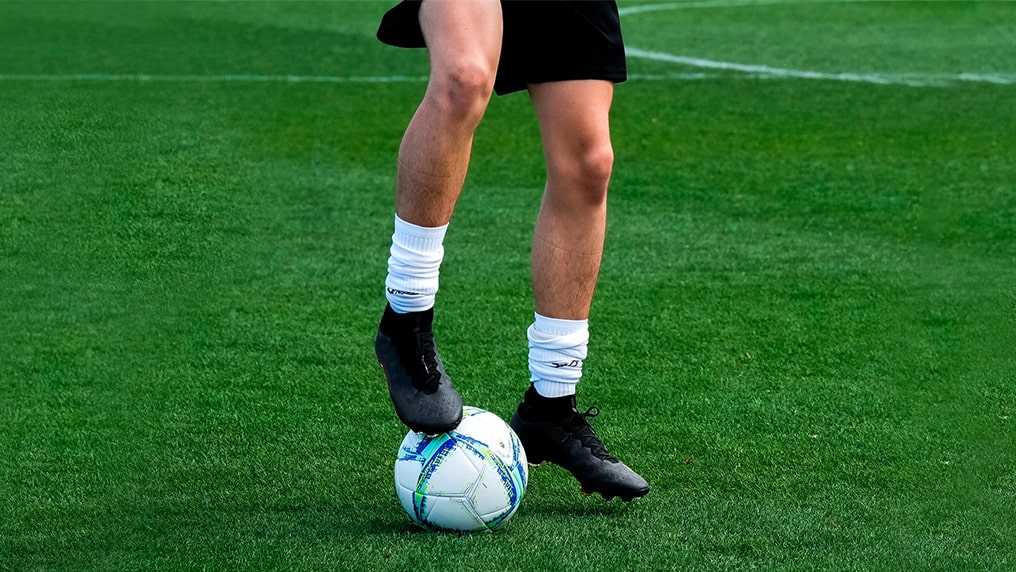Blog
“How to Pick the Right Soccer Ball for Your Skill Level”
Choosing the right soccer ball is essential for improving your game and ensuring an enjoyable playing experience. With countless options on the market, it can be challenging to know which ball is best suited to your needs. This guide will help you understand the factors to consider when selecting a soccer ball based on your skill level, playing environment, and personal preferences.
Selecting the Right Soccer Ball for Training and Beyond
As you refine your soccer skills, the ball you choose becomes a crucial tool for growth. Beginners often benefit from durable training balls, which withstand hours of practice while remaining cost-effective. These balls help players focus on basic techniques like passing, dribbling, and shooting without worrying about premature wear and tear.
For intermediate players, moving to higher-quality materials such as PU-coated balls can make a significant difference. These provide better control and responsiveness, allowing players to experiment with more advanced moves like curve shots or juggling. The improved feel of the ball helps bridge the gap between casual practice and competitive play.
Advanced players often seek match-quality balls certified by organizations like FIFA or IMS. These balls are engineered for precision, offering consistent performance and exceptional touch. Whether practicing free kicks or playing in high-stakes matches, a professional-grade ball ensures every touch translates into precise play.
Remember, the key is to match your soccer ball to your current level, ensuring that your training is both effective and enjoyable.
1. Understand the Different Soccer Ball Types
Soccer balls are designed for specific purposes and environments. Identifying the type that fits your needs is the first step in choosing the right ball.
- Match Balls:
High-quality balls used in official games. They offer excellent performance and precision but are more expensive. Best for advanced or competitive players.
Example: FIFA-approved balls. - Training Balls:
Durable and affordable, training balls are ideal for practice sessions and casual play. They prioritize longevity over performance and are great for beginners and intermediates. - Street and Futsal Balls:
Designed for rough surfaces like concrete or indoor courts, these balls are more durable and have reduced bounce for better control in tight spaces. - Promotional Balls:
Budget-friendly and often lightweight, these are designed more for recreational play or as souvenirs than serious training.
2. Choose the Right Ball Size
Soccer balls come in different sizes to suit various age groups and skill levels. Choosing the correct size ensures comfort and proper control.

- Size 1 (Mini):
Used for skills training and promotional purposes, not for regular play. - Size 3:
Suitable for children under 8 years old. Lightweight and easy to handle for young players. - Size 4:
Ideal for players aged 8–12. Slightly smaller and lighter than standard balls to accommodate developing skills. - Size 5:
The official size for players aged 13 and older, used in competitive games and tournaments.
Tip: Always match the ball size to the player’s age and skill level for the best experience.
3. Material Matters: Cover, Bladder, and Lining
The materials used in a soccer ball determine its performance, durability, and feel.
- Cover Material:
- Synthetic Leather: Common in premium match balls, offering a soft touch and consistent performance.
- Polyurethane (PU): Provides durability and a decent feel, great for intermediate players.
- PVC: Found in training balls, this material is highly durable and affordable but less comfortable.
- Bladder Type:
- Latex Bladders: Offer better responsiveness and softer feel but require frequent inflation.
- Butyl Bladders: Retain air longer and are more durable, ideal for casual or training use.
- Lining Layers:
Balls with multiple lining layers are more durable and maintain their shape better, making them suitable for competitive play.
4. Consider the Playing Surface
The surface you play on significantly impacts the type of soccer ball you should choose.
- Grass Fields:
Standard match or training balls work best on natural grass. Ensure the ball is durable enough to handle uneven surfaces. - Turf Fields:
Opt for turf-specific soccer balls designed to withstand the abrasive nature of artificial surfaces. - Indoor Courts:
Choose futsal balls with low bounce and smaller sizes for better control in confined spaces. - Street Play:
Use balls made from reinforced materials to endure rough concrete or asphalt surfaces.
5. Check for Certifications
If you’re a competitive player, look for soccer balls certified by official organizations like FIFA, NFHS, or NCAA. These certifications ensure the ball meets specific standards for size, weight, and performance.
- FIFA Quality Pro: For top-tier matches, ensuring excellent consistency and performance.
- FIFA Quality: Used in competitive but non-professional games.
- IMS (International Match Standard): Similar to FIFA Quality, meeting performance requirements for casual games.
6. Match Your Skill Level

Your skill level should guide your soccer ball choice to ensure the best experience.
- Beginners:
Focus on durability and affordability. Training balls or basic PVC balls are great options as they can withstand heavy usage. - Intermediate Players:
Look for balls with a balance of performance and durability, such as PU-coated training balls. - Advanced Players:
Choose high-quality match balls for enhanced control, precision, and responsiveness. These are crafted to meet professional standards.
7. Price vs. Quality
Soccer balls range widely in price, so set a budget that aligns with your needs and expectations.
- Budget-Friendly Options:
Great for beginners or casual play. Priced under $30. - Mid-Range Balls:
Offer a balance of quality and durability, suitable for training and intermediate players. Typically $30–$60. - Premium Balls:
High-performance match balls cost $100 or more, ideal for advanced or competitive players.
8. Test the Ball Before Buying
Whenever possible, test the ball to ensure it meets your preferences. Check for the following:
- Touch and Feel: Is the ball soft and responsive?
- Weight and Bounce: Does it feel natural during dribbles and passes?
- Shape Retention: Ensure the ball maintains its round shape after being kicked.
9. Maintenance Tips for Longevity
Proper care can extend the life of your soccer ball.
- Inflation: Use a pump with a pressure gauge to inflate the ball to the recommended level (usually printed near the valve).
- Storage: Keep the ball in a cool, dry place to avoid damage from extreme temperatures.
- Cleaning: Wipe the ball with a damp cloth after use to remove dirt and debris.
Conclusion
Finding the perfect soccer ball for your skill level doesn’t have to be overwhelming. By considering factors like ball type, size, material, and playing surface, you can make an informed decision. Whether you’re a beginner honing your skills or an experienced player competing at a high level, the right soccer ball can elevate your game and make every kick count. Take the time to research, test, and invest in a ball that suits your needs—and enjoy every moment on the field!


